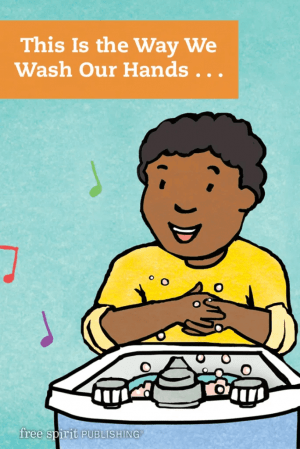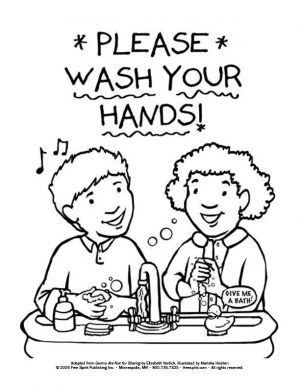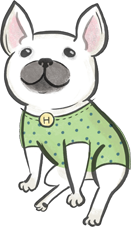 Jimmy Fallon’s new song is helping Americans tune in to the importance of fighting viruses: “Wash your hands, wash your hands, do not touch your face.” He strums his guitar, crooning that if we follow these guidelines, “Then the world would be a better place.” He wrote the song for his young daughters and shared it with millions of followers, hoping that through humor a serious message will spread.
Jimmy Fallon’s new song is helping Americans tune in to the importance of fighting viruses: “Wash your hands, wash your hands, do not touch your face.” He strums his guitar, crooning that if we follow these guidelines, “Then the world would be a better place.” He wrote the song for his young daughters and shared it with millions of followers, hoping that through humor a serious message will spread.
Fallon isn’t the only celebrity getting the word out about handwashing. A Gloria Gaynor TikTok focuses on the importance of washing hands for at least 20 seconds, as recommended by medical experts. The singer introduces a handwashing challenge, soaping up her hands while singing her famous song, “I Will Survive.” (It’s an alternative to the often-recommended “Birthday Song,” which we encourage young children to sing as they scrub because it’s one they already know.) Want another disco classic to wash your hands to? Teach your kids to hum or sing along to the chorus of “Stayin’ Alive” by the Bee Gees: “Whether you’re a brother or whether you’re a mother / You’re stayin’ alive, stayin’ alive / Feel the city breakin’ and everybody shakin’ / And we’re stayin’ alive, stayin’ alive / Ah, ah, ah, ah, stayin’ alive, stayin’ alive / Ah, ah, ah, ah, stayin’ aliiiiiiive!”
Many of us are scared or confused in the face of the coronavirus (COVID-19), but there are steps we can take to fight germs and stay healthy. Step one is washing our hands frequently throughout the day. A recent study by the US Department of Agriculture determined that people fail to correctly wash their hands 97 percent of the time. The most common mistake? Not washing hands long enough to kill germs. Here’s our chance to review proper handwashing techniques so we can help our kids do it right.
Follow these five steps from the Centers for Disease Control and Prevention every time:
- Wet your hands with clean running water (warm or cold), turn off the tap, and apply soap.
- Lather your hands by rubbing them together with the soap. Lather the backs of your hands, between your fingers, and under your nails.
- Scrub your hands for at least 20 seconds. To time that out, children can sing the “Happy Birthday” song from beginning to end twice. (Or choose snippets from a favorite song, or simply count: “1-Mississippi, 2-Mississippi, 3-Mississippi, and so on.)
- Rinse your hands well under clean running water.
- Dry your hands using a clean towel or air dry them.
 It’s easy for children to tune out our constant reminders to wash their hands or to take shortcuts during the process. You might want to do an experiment to give kids a visual learning tool. One preschool teacher’s idea for sharing a handwashing message is called “The Pepper Trick.” Amanda Lorenzo asks one student to dip a finger into a bowl filled with water that has been sprinkled with pepper. (The pepper is a representation of viruses.) The pepper floats, sticking to the fingertip and mimicking how germs and viruses attach to us. Lorenzo has a second bowl filled with soap. She asks the same student to dip that peppery finger into the soap. Viewers watch as the pepper slides off the student’s finger, repelled by the soap. Next, she asks the student to dip the soap-covered finger into the original pepper bowl. Here’s where the “magic” happens. The pepper swiftly moves away from the finger, as if being pushed. The teacher explains how viruses don’t like soap and can be washed away by it. You can share the experiment with your kids too.
It’s easy for children to tune out our constant reminders to wash their hands or to take shortcuts during the process. You might want to do an experiment to give kids a visual learning tool. One preschool teacher’s idea for sharing a handwashing message is called “The Pepper Trick.” Amanda Lorenzo asks one student to dip a finger into a bowl filled with water that has been sprinkled with pepper. (The pepper is a representation of viruses.) The pepper floats, sticking to the fingertip and mimicking how germs and viruses attach to us. Lorenzo has a second bowl filled with soap. She asks the same student to dip that peppery finger into the soap. Viewers watch as the pepper slides off the student’s finger, repelled by the soap. Next, she asks the student to dip the soap-covered finger into the original pepper bowl. Here’s where the “magic” happens. The pepper swiftly moves away from the finger, as if being pushed. The teacher explains how viruses don’t like soap and can be washed away by it. You can share the experiment with your kids too.
As you practice social distancing, notice how your hands are busy all day long, touching so many different surfaces: dishes, railings, countertops, handles, the phone, computer keyboards, the remote control. Scientists are still researching how long the coronavirus can live on a hard surface, but on some surfaces it may live for 72 hours or longer. Often, we forget how many things we’ve touched, and then we rub our eyes, scratch our noses, or put our fingers in our mouths. Suddenly, we’ve introduced germs into an environment where they take hold and spread.
As you focus on more frequent handwashing, you may want to try the phrase “Germs are not for sharing” as a reminder. Check in to make sure family members wash up, especially before and after eating; after using the bathroom; after sneezing, coughing, or blowing their nose; and after touching a phone, computer, or tablet. Show children how to sneeze and cough into a tissue or their sleeve (not on each other or you). And keep surfaces clean by frequently wiping them down with germ-fighting cleansers or bleach.
I write this while working from home, with my kids here instead of at school. I feel grateful that people across America—and the world—are focused on trying to keep each other safe and healthy. I wish you all well in this time of great uncertainty. Sending good thoughts to each of you, from far away.
Free Coloring Page! Choose “scale to paper” in your print window.
“This Is the Way We Wash Our Hands …” originally appeared at freespiritpublishingblog.com. Copyright © 2020 by Free Spirit Publishing. All rights reserved.
“This Is the Way We Wash Our Hands …” originally appeared at freespiritpublishingblog.com. Copyright © 2020 by Free Spirit Publishing. All rights reserved.

